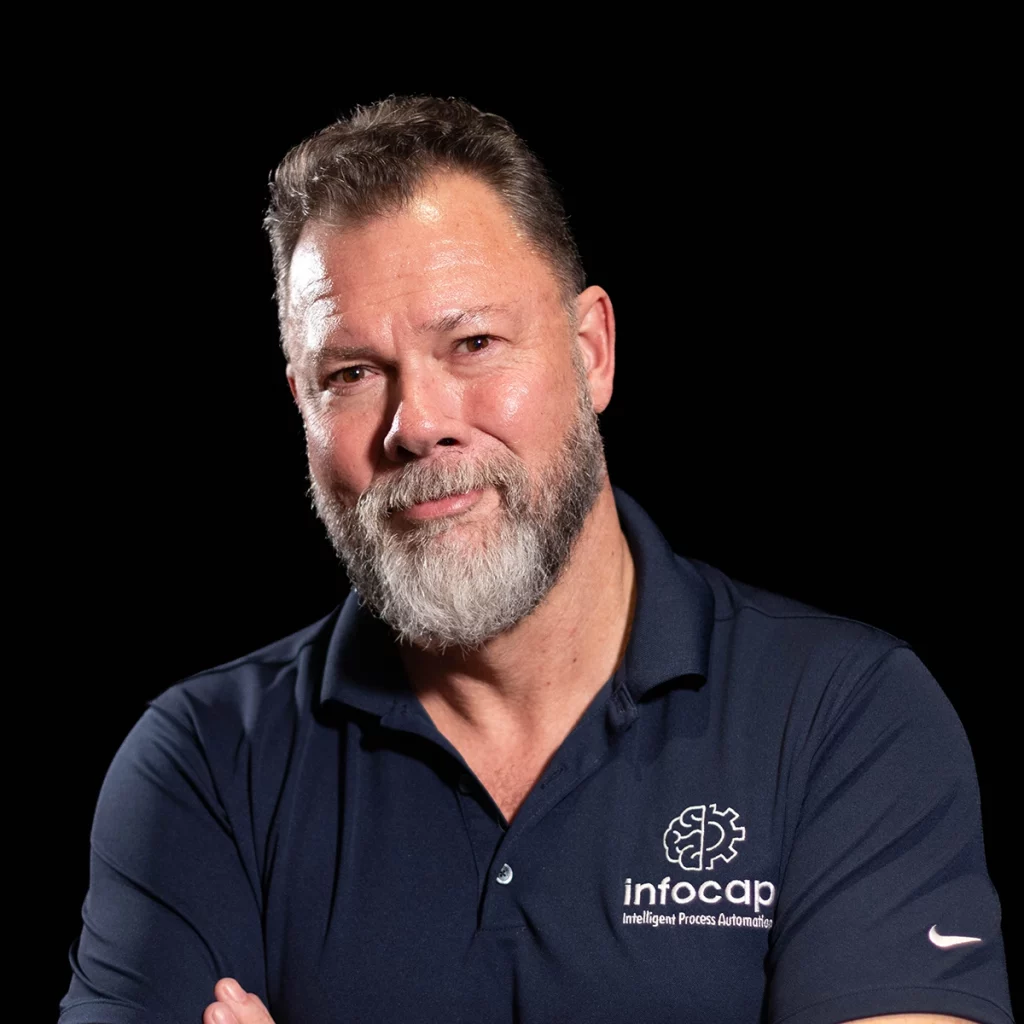
Transforming Financial Services From Legacy to Leading Edge ThrOUGH Modern Automation
Featuring Nathaniel Palmer, CEO, Infocap
February 26, 10:00 – 11:00 am EST
View Webinar recap:
We all know that some organizations are at the head of the race, and others bring up the rear.
But what does that gap in performance mean to the bottom line of mid-size banks and credit unions?
Fact:
Financial institutions leading the pace of digital transformation are growing 10X faster than their laggard competitors, according to the November 2024 Digital Banking Report.
And you don’t get to 10X growth by standing still, and certainly not by accident.
The secrets of digital leaders?
An extreme focus on:
User experience. Productivity.
But most importantly…
Smart, strategic risk-taking.
In other words, future-proofing their automation foundation through digital transformation and human-centric automation.
On Wednesday, Feb. 26, at 10 AM Eastern time, join Human-Centric Automation expert Nathaniel Palmer, CEO of Infocap AI Corp for a high-impact session on breaking free from digital stagnation, and …
Learn how to:
- Automate tedious processes to reclaim time and redirect budget to forward-facing innovations.
- Integrate systems for seamless operations over the automation chasms in place today.
- Leverage Real World, Targeted AI to drive smarter business decisions.
Palmer has more than 30 years of experience building high-volume transaction-focused automation systems. He leads Infocap with the aim of enabling organizations to reach their full potential by eliminating the disconnect between technology and the human workforce meant to benefit from it. And the good news is that automation has never been less expensive, simpler, and with better outcomes than it is TODAY. With fast-evolving, AI-powered automation (Agentic AI) that transforms processes to unlock potential in the human workforce, organizations can create automations that don’t just mimic humans, but extend human capabilities, moving beyond mindless performance improvements to reliable, predictable, and high-performance action.
Don’t get left behind as AI rapidly evolves. While the Webinar will focus specifically on automation challenges and solutions for mid-sized banks and credit unions, Palmer will offer insights that can be leveraged across all organizations. This Webinar is a must for practitioners, vendors, SIs and others interested in the transaction automation and IDP. Learn what is truly possible today when it comes to not just automating your processes but truly enabling your workforce by extending its capabilities.

Nathaniel Palmer is the CEO of Infocap AI Corp and the author of “Gigatrends” (2024) which recently reached #1 on Amazon’s “Hot New Releases” list for books on AI and Machine Learning. Rated as the “#1 Most Influential Thought Leader in Business Process Management (BPM)” by independent research, Nathaniel has also co-author over a dozen books on BPM and Process Improvement, as well as being the first individual named as a “Laureate in Workflow.” Over his career he has led the design and execution for some of the industry’s largest and most complex projects involving investments exceeding $200 million and has overseen more than $2.5 billion in R&D around automation and AI.
RECENT WEBINARS
NARA's Vision for Best Practices in Capturing Metadata
Featuring NARA Senior Electronics Records Policy Analysts Kevin De Vorsey, Anne Mason and Markus Most
Optimizing your Investment in IDP Architecture: Best Way to Consume AI Services to Drive your Apps
Presented by Brent Wesler, VP of Strategic Technology and Digital Automation at PiF Technologies
Cooking up a Successful Capture & IDP Solution
Presented by: Ralph Gammon, Senior Analyst, Infosource
BACKGROUND
After 18 years, Infosource’s annual Capture & IDP Conference is going virtual. It was a tough decision, but one we made with long-term sustainability goals in mind. With meetings increasingly moving online, it has become more difficult to support an in-person event. We fully realize that the networking and personal connections cannot be replicated online, but we are at least hoping to provide you with the same high-quality and educational content you’ve come to expect from us. On the plus side, the virtual conference will be free to attendees. Okay, so what exactly will the virtual conference consist of? Over the next 12 months, we will offer a total of six webinars modeled after our traditional conference sessions.